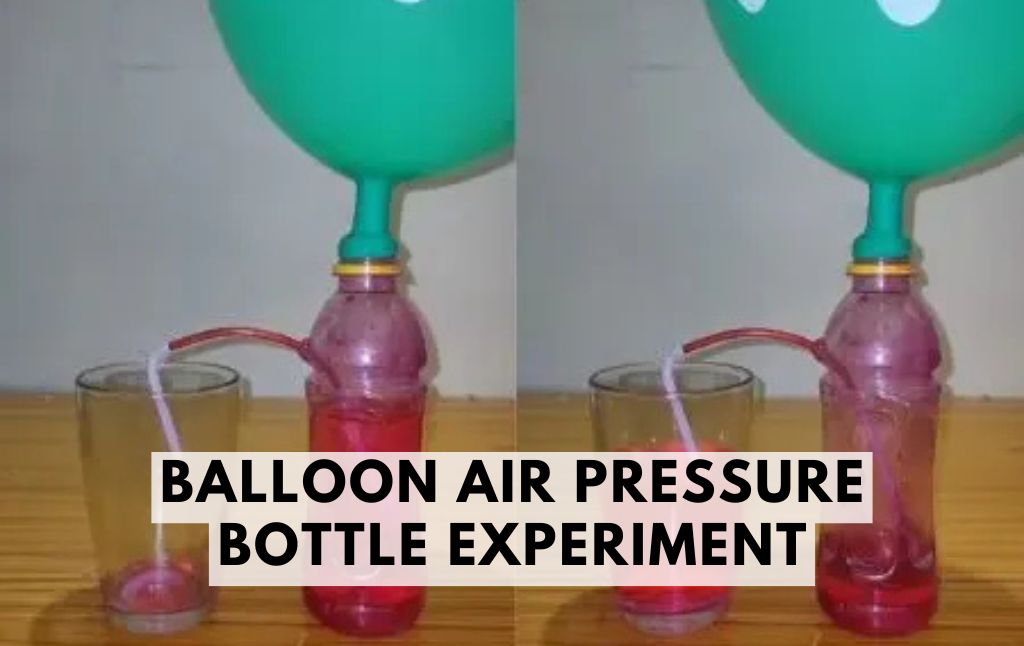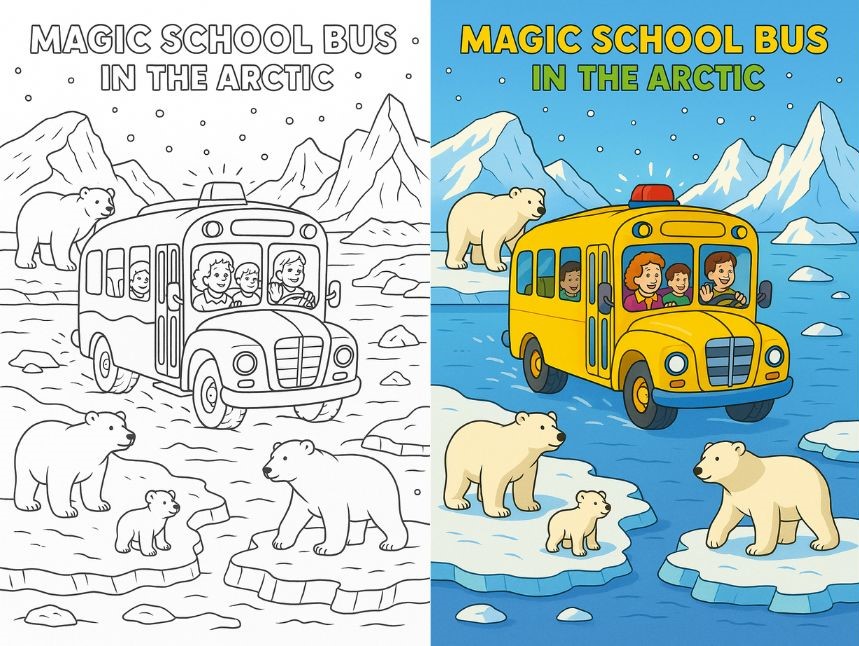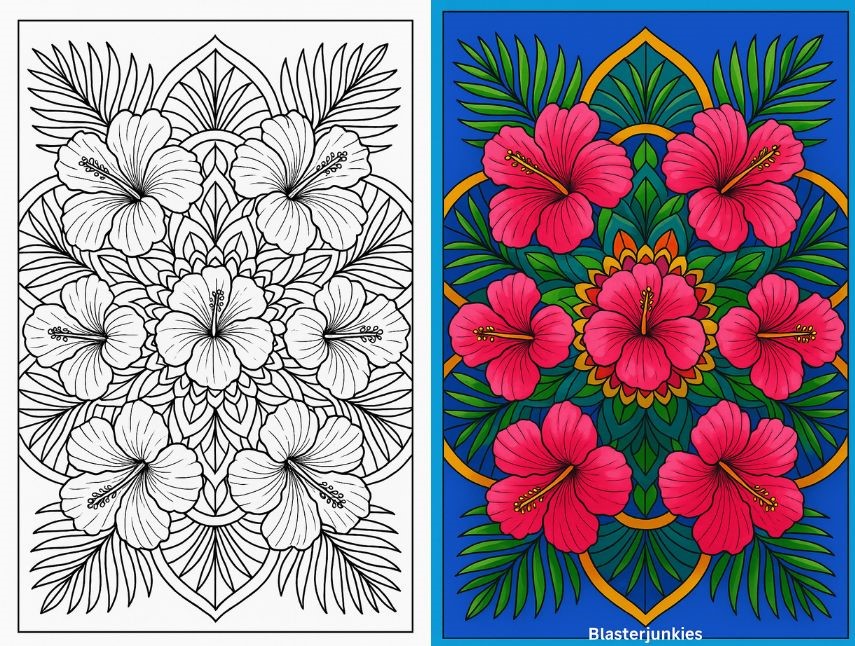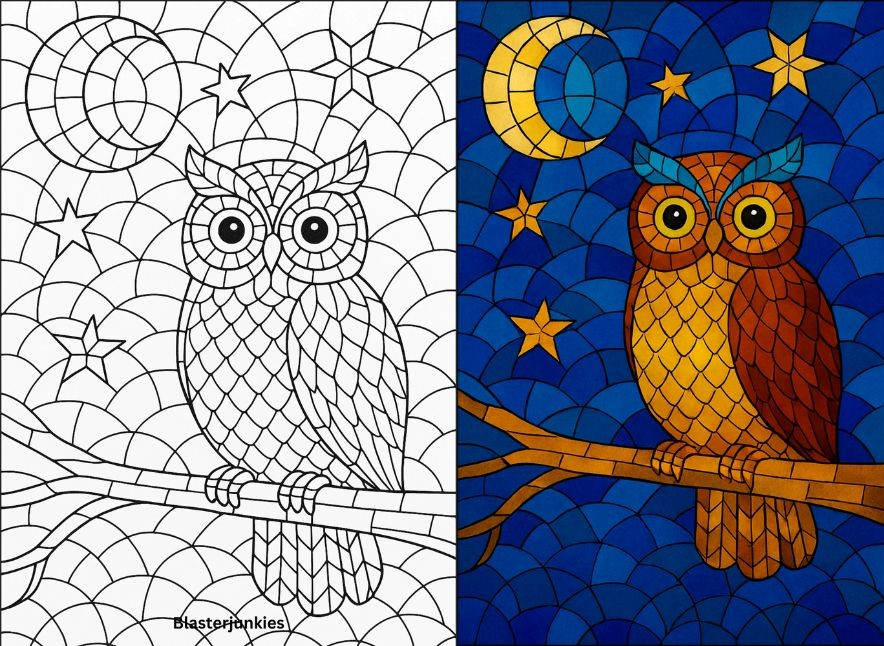Looking for a super fun and educational experiment? The Balloon Air Pressure Bottle Experiment is a perfect hands-on way to explore air pressure, fluid dynamics, and physics—all while creating a cool homemade drink dispenser!
This is a fantastic experiment for kids, science fairs, or even as a unique party trick to wow your guests. Let’s dive in!
Why This Experiment is So Cool
✅ It turns science into a fun, interactive experience!
✅ Teaches air pressure concepts in a simple way.
✅ Doubles as a homemade drink dispenser—great for parties!
✅ Uses easy-to-find household materials.
Supplies Needed
- Clear plastic bottle (16-20 oz or 2-liter)
- Balloon (the bigger, the better!)
- Drinking straw (a flexible one works best)
- Modeling clay or putty (to seal the hole)
- Water (or your favorite drink)
- Food coloring (optional, for a cool effect)
- Sharp nail or screw (for making a hole in the bottle)
- Cup or bowl (to catch the flowing liquid)
Step-by-Step Instructions
Step 1: Make a Hole in the Plastic Bottle
Using a sharp nail or screw, poke a hole about ¾ of the way up the side of the plastic bottle. The hole should be just big enough to fit a straw snugly.
Step 2: Insert the Straw & Seal the Hole
Insert the straw into the hole.
Use modeling clay or putty to seal around the straw. Make sure no air or water can leak out except through the straw.
Step 3: Fill the Bottle with Water
Pour water (or your favorite drink) into the bottle until it reaches the level of the hole.
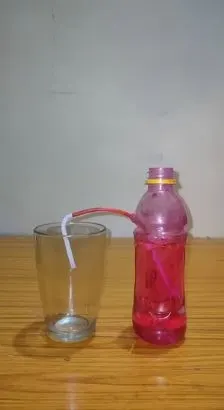
Add food coloring if you want to make it more visually exciting!
Step 4: Inflate the Balloon
Blow up a large balloon but don’t tie it off.
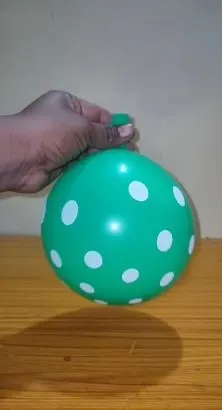
Twist the neck of the balloon a few times to prevent air from escaping.
Step 5: Attach the Balloon to the Bottle
While holding the twisted balloon neck, stretch the mouth of the balloon over the bottle’s opening.
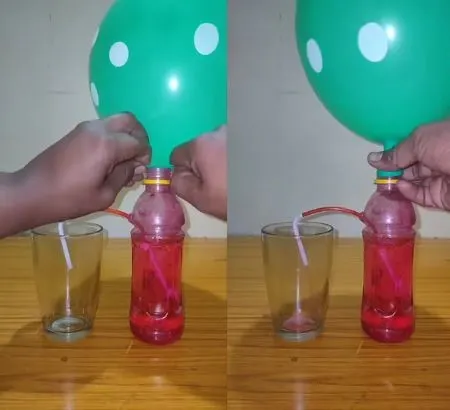
Make sure it’s snugly fit!
Step 6: Release the Air & Watch the Magic!
Untwist the balloon neck and let the air rush into the bottle.
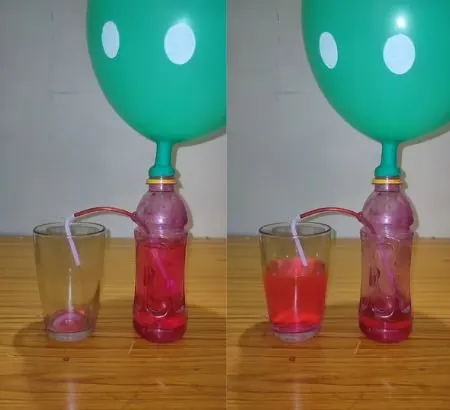
Watch as the air pressure pushes the liquid out through the straw into your cup! 💦🥤
The Science Behind It: How Does It Work?
This experiment demonstrates air pressure in action! 🎈💨
1️⃣ Air Pressure Forces Liquid Out
When you release the balloon’s air into the bottle, it creates high pressure inside the bottle. This high pressure pushes the liquid out through the straw into your cup.
2️⃣ High-Pressure Air Moves to Low-Pressure Air
In nature, high-pressure air always flows toward lower-pressure air (this is why we get wind in weather systems!). In this experiment, the balloon increases the pressure inside the bottle, forcing the liquid to escape.
3️⃣ Why Does the Water Stop?
When you pinch the balloon’s neck again, the air pressure inside and outside the bottle becomes equal. This stops the flow of liquid because the forces are balanced!
Fun Variations to Try!
🟢 Try Different Liquids – Does soda flow faster than water? What happens with thicker liquids like juice?
🔴 Use a Larger Balloon – The bigger the balloon, the more air pressure! How much faster does the drink flow?
🔵 Test with Different Bottle Sizes – Does a bigger bottle create more pressure? Try a 2-liter bottle vs. a small water bottle.
🟠 Make a Two-Straw System – Add two straws at different heights. What happens when both release liquid at the same time?
Safety Tips
✔ Use adult supervision when making holes in the bottle.
✔ Don’t over-inflate the balloon—it might pop!
✔ Keep towels handy in case of spills.
✔ Use food-safe materials if you plan to drink from the dispenser.
Final Thoughts: A Must-Try Science Experiment!
The Balloon Air Pressure Bottle Experiment is not only a fun and engaging way to learn about air pressure, but it’s also a great party trick or DIY drink dispenser. Kids will love watching the balloon power the flow of liquid, and they’ll be learning physics without even realizing it!
Try it out and let me know—what drink did you use?
Kids Activities
Looking for more fun kids activities and other ideas to keep kids engaged, learning, and having fun? Check out these:
Egg Drop Inertia Science Project: A Fun Physics Experiment for Kids!
Making Flying Tea Bag Ghosts: A Spooky & Fun Science Experiment
Ice Cube Painting: A Fun and Cool Summer Art Activity for Kids
Rainbow in a Jar Density Experiment – A Fun and Colorful Science Activity
Hot and Cold Balloon Science Experiment for Kids
Dancing Popcorn Experiment Fun & Easy Dancing Corn Science
How to Make a Balloon Hovercraft: A Fun DIY Science Experiment
Easy Steps to Make New Year’s Poppers: A Fun DIY Celebration Craft

